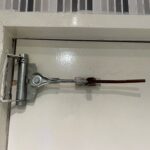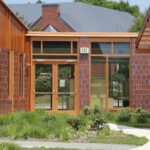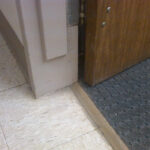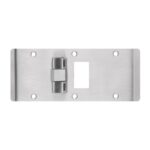The Connecticut State’s Attorney has released a report on the December 2012 shootings at Sandy Hook Elementary School in Newtown, Connecticut (full report available here). Although it details the actions of the shooter, Adam Lanza, there are still many unanswered questions.
One of the details that surprised me most was the duration of the event. Staff first heard glass breaking at approximately 9:35 a.m. The first 911 call was received by Newtown Police at 9:35:39, and the first police officer arrived at 9:39. The last gunshot was heard at 9:40:03, believed to be the shot with which the shooter committed suicide. In just over 5 minutes, 26 lives were lost.
Here are some excerpts from the report, and questions that came to my mind as I read:
Report: The doors to the school were locked, as they customarily were at this time, the school day having already begun. The shooter proceeded to shoot his way into the school building through the plate glass window to the right of the front lobby doors.
The main entrance to the school was located next to the large glass window that the shooter shot out to enter the school. A patio area was just before the entrance doors. The entrance to the lobby consisted of two sets of locked full glass doors that opened outwardly using a pull handle. They were separated by a small vestibule. The doors were secured with an electronic locking mechanism. The doors could be opened from the inside with a horizontal push bar across the middle of the door.
The broken area of the window that the shooter shot out measured approximately 35.33 inches wide and 42.5 inches high.29
The exterior of the main entrance door way had a call box, buzzer system with a video camera. The call box was installed in 2005. The video camera did not record, but the video could be viewed live on three monitoring systems on the secretaries’ desks in the main office, with no recording capabilities. The electronic unlocking of the front doors was done by using a “key button” on any of the three monitoring systems.
Questions: How can we provide even more security at school entrance doors? The doors were locked and the door and hardware functioned properly. Could protective glazing or film have prevented the shooter from entering the school for long enough to lessen or avoid the tragedy?
Report: As the staff member left the room, the staff member heard gunshots and saw Mrs. Hochsprung and Mrs. Sherlach fall down in front of the staff member. The staff member felt a gunshot hit the staff member’s leg. Once down, the staff member was struck again by additional gunfire, but laid still in the hallway. Not seeing anyone in the hallway, the staff member crawled back into room 9 and held the door shut. A call to 911 was made and in the ensuing moments the telephone in room 9 was also used to turn on the school wide intercom system. This appears to have been done inadvertently, but provided notice to other portions of the building.
Questions: What communication plans do schools have in place in the event of an emergency? The accidental school-wide notification allowed teachers, staff, and students to hide, or to secure doors where possible.
Report: After shooting and killing the two adults and wounding the two others, the shooter entered the main office. The office staff had taken shelter in the office. They heard sounds of the office door opening, footsteps walking inside the office and then back toward the office door. Staff members heard the door open a second time and then heard more gunfire from outside the office. They called 911.
Questions: Is it part of each school’s lockdown protocol for office staff to find a place to hide? It’s not feasible to keep the main office door locked all the time, and approaching the door to lock it would have been extremely dangerous due to the proximity of the shooter. Would a lock with the capability of remote lockdown be a viable solution?
Report: Where the shooter specifically went next is unclear. The evidence and witness statements establish the shooter went down the hallway in an easterly direction ultimately entering first grade classrooms 8 and 10. The order is not definitively known. While in classrooms 8 and 10, the shooter shot and killed four adults and twenty children with the Bushmaster rifle. Twelve children survived, one from classroom 8 and eleven from classroom 10.
The two classrooms on either side of 8 and 10 were numbered 6 and 12. Classroom 6 was on the eastern side of classroom 8 and classroom 12 was on the western side of classroom 10. Staff and students hid in the class restrooms, locking the restroom doors from the inside.
All classrooms in the north hallway had a restroom and a closet. The restrooms were uniformly designed, approximately 4 feet 7 inches by 3 feet 6 inches with a solid wood door. The door of each restroom opened inward and away from the toilet. Each restroom door had a knob push button lock on the inside handle and a key lock on the outside handle.
Questions: Many classrooms do not have individual restrooms, or a closet that could become a hiding place for students and staff. Should emergency planning factor into classroom design? On an individual restroom, a push-button lock is really the only usable function for privacy. Would this application be feasible for middle school and high school, where crimes are more often committed by students?
Report: The doors in the hallway all locked from the outside with a key. The interior door handles had no locking mechanism. All of the doors opened outwardly toward the hallway. All doors were solid wood with a circular window in the upper half of the door.
Classrooms in the north hallway 12 and 10, 8 and 6, 6 and 4, and 3 and 5 respectively had an interior door that was shared by the two classrooms.
Questions: The locks at Sandy Hook were standard classroom function, and the doors were outswinging. Classroom security function locks would have been lockable without opening the door, but would the teachers have had enough time to do so? In a situation like this, seconds count. Are schools typically keeping doors closed during the school day? How should the connecting doors between classrooms be handled?
Report: Classroom 12 was located on the north side of the north hallway and was the first classroom east of the front lobby. The classroom door was located 23 feet east of the lobby. The window to the door was covered on the hallway side with dark colored paper that was there from a previous lockdown drill.
Question: The shooter passed Classroom 12 on his way to Classrooms 8 and 10. Did the paper over the window lead him to believe that the room was empty? Board of Education standards typically require glass lites in classroom doors. What’s the best way to satisfy the need for a lite and the ability to cover it during a lockdown situation?
It is unlikely that some of the questions surrounding this tragedy will ever be answered. My hope is that we learn all we can from this, and make our schools safer through a combination of security, design, protocols, and drills.
If you have thoughts or ideas to share, please leave a comment.
On December 12th, SecurityInfoWatch is hosting a webinar called Lessons Learned from Sandy Hook. More information is available here.
You need to login or register to bookmark/favorite this content.






The fact is that no matter what you do if a shooter comes in with high powered weapons he/she is going to get in if they want to. Glass, wood and even metal in most cases. There are so many codes and laws that need to be considered, the cost of replacement hardware is sometimes staggering (I am not complaining) so one way that we have changed things is when a classroom is occupied it must remain closed and locked, we changed all hardware out to have Store Room function devices so that they cannot be left unlocked.
Thank you Bob. I really appreciate your insight. If a student has to leave the classroom during class, does the teacher have to stop teaching to let them back in, or how does that work procedurally?
Yes the teacher or he/she can have a student open the door. It can be considered an inconvenience however when explained as to why we are doing this it was/is an accepted practice.
Thanks. I think it would have made a difference at Sandy Hook.
Lori,
Thanks for your thoughtful response on this topic, especially the interesting thought about why the shooter passed by the first classroom. I’m adding this report to my reading list for the holiday weekend.
That doesn’t sound like a very festive activity, but I think we owe it to them to learn as much as we can from it.
Seems that specialty glass of some sort would have been extremely helpful at the exterior. I’ve noted the absence of BR glass/doors in a number of instances where other security features such as bollards, and security personnel are added to a building’s exterior.
I agree. It’s not about stopping the intruder indefinitely, just slowing him down. Maybe a security film on the glass?
Here’s a news report link covering the application of a ‘delay’ strategy applied to a elementary school in response to Sandy Hook.
http://www.wect.com/story/24218176/elementary-school-beefs-up-security-serves-as-trial-for-county
Thanks for the link!